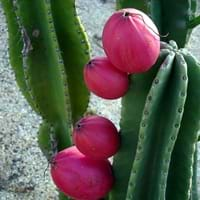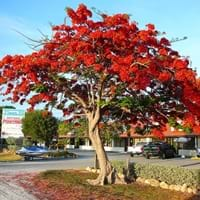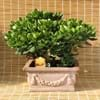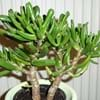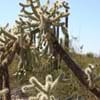Life Span
Annual
Perennial
Type
Cactus
Flowering Plants, Tree
Origin
South America, Argentina, Brazil
Not Available
Types
Not Available
Not Available
Habitat
Desert
old gardens
USDA Hardiness Zone
11-15
10-11
AHS Heat Zone
12-10
Not Available
Sunset Zone
16, 17, 21, 22, 23, 24
Not Available
Habit
Upright/Erect
Clump-Forming
Flower Color
White, Yellow
Orange Red, Yellow
Flower Color Modifier
Bicolor
Multi-Color
Fruit Color
Pink, Red
Brown
Leaf Color in Spring
Green
Green
Leaf Color in Summer
Green
Green
Leaf Color in Fall
Green
Green
Leaf Color in Winter
Green
Green
Leaf Shape
Toothed
Oblong
Plant Season
Spring, Summer, Fall, Winter
Fall, Spring, Summer
Sunlight
Full Sun
Full Sun, Partial Sun
Growth Rate
Medium
Very Fast
Type of Soil
Loam, Sand
Clay, Loam, Sand
The pH of Soil
Acidic, Neutral, Alkaline
Acidic, Alkaline
Soil Drainage
Well drained
Well drained
Bloom Time
Early Summer, Summer, Late Summer
Early Summer, Summer
Tolerances
Drought, Salt
Drought
Where to Plant?
Container, Ground
Ground
How to Plant?
Seedlings
Seedlings
Plant Maintenance
Medium
Low
Watering Requirements
Never Over-water
occasional watering once established
In Summer
Lots of watering
Lots of watering
In Spring
Moderate
Moderate
In Winter
Average Water
Average Water
Soil pH
Acidic, Neutral, Alkaline
Neutral, Alkaline
Soil Type
Loam, Sand
Clay, Loam, Sand
Soil Drainage Capacity
Well drained
Well drained
Sun Exposure
Full Sun
Full Sun, Partial Sun
Pruning
Remove damaged leaves, Remove dead branches, Remove dead leaves
Requires little pruning
Fertilizers
All-Purpose Liquid Fertilizer
Apply 15-5-15
Pests and Diseases
Red blotch
Pests and diseases free
Plant Tolerance
Drought
Drought
Flower Petal Number
Double
Single
Foliage Texture
Bold
Medium
Foliage Sheen
Matte
Matte
Attracts
Birds, Hummingbirds, Butterflies
Not Available
Allergy
Not Available
Not Available
Aesthetic Uses
Showy Purposes
Showy Purposes, Used in parkland
Beauty Benefits
Not Available
Not Available
Environmental Uses
Air purification
Air purification, Shadow Tree
Medicinal Uses
Antioxidants, Indigestion, Oedema, Wounds
antihelmintic, anti-inflammatory, Arthritis, constipation, hemiplagia, Inflammation
Part of Plant Used
Fruits
Whole plant
Other Uses
Showy Purposes
Grown for shade, Used as Ornamental plant
Used As Indoor Plant
Yes
No
Used As Outdoor Plant
Yes
Yes
Garden Design
Container, Fruit, Fruit Tree, Hedges, Houseplant, Rock Garden, Wall, Tropical
Edible, Herb / Vegetable, Mixed Border
Botanical Name
CEREUS hildmannianus ssp. uruguayanus
Delonix regia
Common Name
Peruvian Apple Cactus
Gulmohar, Royal Poinciana
In Hindi
Peruvian Apple cactus
गुलमोहर
In German
Peruanische Apple-Kaktus
Flammenbaum
In French
Péruvienne d'Apple Cactus
Delonix regia
In Spanish
Peruana de Apple Cactus
malinche
In Greek
Του Περού μήλο κάκτος
Delonix regia
In Portuguese
Cactus a Apple peruana
flamboiã
In Polish
Peruwiański Jabłko Cactus
wianowłostka królewska
In Latin
Apple Peruviani Cactus
CHORIZIA
Phylum
Magnoliophyta
Magnoliophyta
Class
Magnoliopsida
Magnoliopsida
Order
Caryophyllidae
Fabales
Family
Cactaceae
Brassicaceae
Clade
Angiosperms, Core eudicots, Eudicots
Angiosperms, Eudicots, Rosids
Tribe
Cereeae
Not Available
Subfamily
Cactoideae
Caesalpinioideae
Number of Species
Not Available
Not Available
Difference Between Peruvian Apple Cactus and Royal Poinciana
If you are confused whether Peruvian Apple Cactus or Royal Poinciana are same, here are some features about those plants to help you choose better. Many people think that these two plants have the same characteristics, but one can see Peruvian Apple Cactus and Royal Poinciana Information and learn more about it. Fertilizers required for proper growth of Peruvian Apple Cactus are All-Purpose Liquid Fertilizer, whereas for Royal Poinciana fertilizers required are Apply 15-5-15. Hence, one should know the basic difference between Peruvian Apple Cactus and Royal Poinciana if you are planning to have them in your garden to enhance its beauty.
<
Flowering PlantsImportance of Peruvian Apple Cactus and Royal Poinciana
Want to have the most appropriate plant for your garden? You might want to know the importance of Peruvian Apple Cactus and Royal Poinciana. Basically, these two plants vary in many aspects. Compare Peruvian Apple Cactus and Royal Poinciana as they differ in many characteristics such as their life, care, benefits, facts, etc. Every gardener must at least have the slightest clue about the plants he wants to plant in his garden. Compare their benefits, which differ in many ways like facts and uses. The medicinal use of Peruvian Apple Cactus is Antioxidants, Indigestion, Oedema and Wounds whereas of Royal Poinciana is antihelmintic, anti-inflammatory, Arthritis, constipation, hemiplagia and Inflammation. Peruvian Apple Cactus has beauty benefits as follows: Not Available while Royal Poinciana has beauty benefits as follows: Not Available.
Compare Facts of Peruvian Apple Cactus vs Royal Poinciana
How to choose the best garden plant for your garden depending upon its facts? Here garden plant comparison will help you to solve this query. Compare the facts of Peruvian Apple Cactus vs Royal Poinciana and know which one to choose. As garden plants have benefits and other uses, allergy is also a major drawback of plants for some people. Allergic reactions of Peruvian Apple Cactus are Not Available whereas of Royal Poinciana have Not Available respectively. Having a fruit bearing plant in your garden can be a plus point of your garden. Peruvian Apple Cactus has showy fruits and Royal Poinciana has no showy fruits. Also Peruvian Apple Cactus is not flowering and Royal Poinciana is not flowering . You can compare Peruvian Apple Cactus and Royal Poinciana facts and facts of other plants too.
